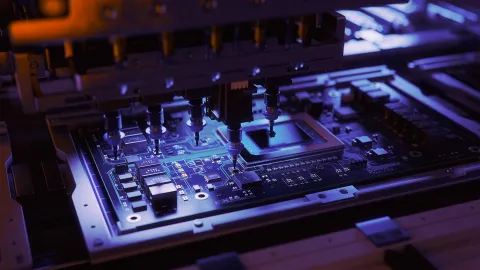ACH is modernizing – so should you

ACH has been a force in payments for decades. First deployed in the US in the early 70s, the electronic account to account payment system has grown to be a critical part of financial systems around the world, with nearly 100 ACH systems in operation.
It is the length of that very legacy, however, that creates challenges around keeping ACH operating and relevant. Many ACH processing systems still in production can trace their origins back to the beginning of the system, and it is not uncommon for banks to run ACH processing platforms based on code that has been running for more than 20 years, and in many cases even 40 years or more.
At the same time, newer payment systems, especially instant payment systems, are taking hold. The Clearing House launched Real Time Payments in 2017, and the Federal Reserve launched FedNow in 2023. The card networks are also pushing into the account-to-account payment market with disbursement and push-to-card payment options.
Despite the competition, ACH remains highly relevant. The reasons are clear. ACH is ubiquitous, proven, reliable, and well understood by the entire financial ecosystem. Critically, even as new payment systems emerge, ACH has been continuously improving and adapting to meet the needs of modern customers. Same-day ACH, for example, launched in the US in 2017. Electronic payments systems are becoming more and more common across both consumer and commercial use cases. The result is ACH volumes continuing to rise at impressive rates. NACHA reports that US ACH transaction volumes rose 6.7% Y/Y in 2024, and Same Day ACH transaction volumes rose 45%. In fact, US ACH volumes have more than doubled since 2015. (Source: NACHA, 2025). As a result, banks are continuing to invest in their ACH systems, with spending on ACH growing at 10% CAGR. (Source: IDC Worldwide Banking IT Spending Guide).
The rise in electronic payments is driving a need for institutions to take a hard look at their ACH environments. The new reality of electronic payments means that the systems must be highly scalable, resilient, and flexible. Bluntly, many of the legacy systems simply aren’t up to the task. They may work, but for a bank to truly compete in the modern era of digital commerce, they need to do more.
Payment modernization strategies are often driven by the need to adopt ISO 20022 and the desire to add instant payments. Deploying a modern ACH strategy, however, is just as important, if not more so. Newer ACH platforms, often part of integrated payment platforms and hubs, benefit from state-of-the-art architecture, allowing them to adapt and add features and capabilities as the payment environment changes. This could include updates to network rules, changes to transaction limits, the opening of a new Same Day ACH windows, new regulatory requirements, or other dynamic shifts. Furthermore, modern platforms offer better visibility into data and reporting, which in turn can drive other analytics, including machine learning and artificial intelligence. And while ACH does not currently support ISO 20022 directly, NACHA has responded to its expanding presence and does support the format via mapping, which in turn creates opportunities to integrate with ISO-based systems and take full advantage of advanced data management.
Not only are modern ACH platforms more advanced and nimble, they can also be deployed as SaaS. This option can be especially attractive to small and mid-size banks, shifting the burden of maintenance, integration, and management to their technology partners. Large banks can also benefit, opting for hybrid or self-hosted deployments.
Despite its age, the ACH system has proven remarkably resilient and responsive to modern payment needs. The processing platforms, however, have not always kept up. To remain competitive, forward-thinking institutions must adopt modern ACH capabilities to take advantage of the changing market. To that end, it is essential to work with your payment technology partners to develop modernization strategies that ensure that you are not only keeping up but moving ahead.



